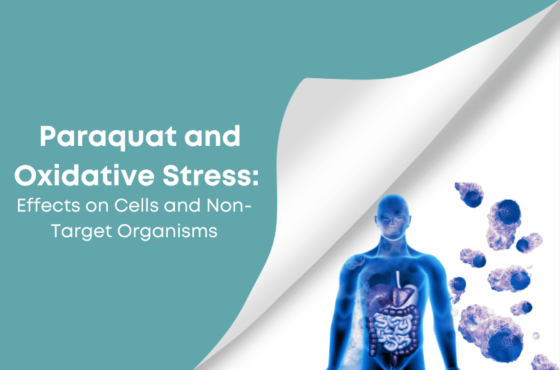Paraquat works by rapidly killing green plant tissue on contact, inducing membrane damage and cell death in the process. And while its mode of action may offer some background on what is paraquat, a few mechanisms of its toxicity is still poorly understood today. And although the herbicide is formulated to be toxic to plants – thus being highly effective in killing unwanted weeds and grass – studies in recent decades have also found paraquat to be toxic or lethal to humans and animals.
Research has particularly implicated paraquat in Parkinson’s disease. In fact, thousands of plaintiffs have filed a paraquat lawsuit after they developed Parkinson’s and later found out the potential connection between the chemical they have been handling for years and a brain disease.
Plaintiffs allege that paraquat manufacturer Monsanto – now acquired by German company Bayer – failed to warn them about the dangers of paraquat, which they could have avoided if the health risks associated with the weed killer had been indicated on its label. Unfortunately, most of the time, victims of paraquat exposure who were diagnosed with Parkinson’s disease years after they have worked closely with the weed killer have no way of knowing what could have caused their disease.
And that is where the importance of talking to an experienced and reliable paraquat attorney comes in. An attorney can help you determine if your Parkinson’s disease diagnosis is related to paraquat by helping you gather medical records and evidence of significant exposure to the chemical.
If you or your loved one developed Parkinson’s after prolonged exposure to paraquat, contact us today and we will get you in touch with the perfect paraquat attorney who will help you achieve justice that you deserve.
How does Paraquat work?
Paraquat works by targeting the chloroplast and diverting the flow of electrons from ‘Photosystem I,’ which results in the production of toxic reactive super oxides that rapidly disintegrates cell membranes and tissues.
When these cell membranes are destroyed, water quickly escapes from the plant, causing their dehydration. What follows is the visible damages, such as yellowing, browning, wilting, and eventual death of treated plants.
What is Paraquat mode of action?
There are certain classifications of the modes of action of herbicides according to the plant process that they affect. For instance, herbicides may target photosynthesis, cell division, or target specific enzymes in a plant. Paraquat, in particular, primarily inhibits photosynthesis. The paraquat mode of action are listed below.
1. Photosynthesis inhibition
The chlorophyll absorbs energy from sunlight and converts it into chemical energy. This process is called photosynthesis – a process that is not only important to plants, but also essential to all life on earth – as both plants and animals depend on it. This is also the very process that paraquat disrupts. The chemical acts on photosynthetic cells by preventing the conversion of absorbed light energy into chemical energy.
This results in the production of destructive reactive oxygen species (ROS), which are particularly harmful to cells. Reduced levels of chlorophyll content combined with increased ROS production severely damages cell structure and inhibits cell growth.
2. Enzyme inhibition
Nitric oxide synthases are a family of enzymes that produce nitric oxide (NO), which has some beneficial effects on certain lung diseases. However, evidence exists that paraquat can cause inhibition of nitric oxide (NO) synthesis, which may cause excitotoxicity in the lungs.
Excitotoxicity may occur in the lungs when there is overactivation of N-methyl-D-aspartate (NMDA) receptors, a process that can provoke pulmonary edema or a buildup of fluid in the lungs.
3. Other modes of action
Another mode of action of paraquat is cell membrane disruption. Cell membrane disruptor herbicides like paraquat react within the plant to produce compounds such as superoxides and hydroxyl radicals that destroy cell membranes and ultimately result in the breakdown of cells.
Apparent herbicide injuries such as browning of the plant tissue typically occur in one to two hours under warm and bright conditions. Destruction of cell membranes can be seen on the surface through rapid browning of plant tissue.
How effective is Paraquat against weed?
Paraquat is effective against a wide variety of weeds, including around 32 broadleaf weeds and early-season grass weeds. Paraquat use is also known to be an effective part of an integrated weed management plan, as it can control difficult weeds, which are weeds that have developed herbicide resistance.
And although it is supposed to be safe when used as directed on the label, paraquat remains to be occasionally involved in cases of intentional and accidental ingestion, with the former becoming a growing problem in certain less developed countries while the latter being a result of people violating recommended practice when using the chemical.
How fast does Paraquat work?
Paraquat is a fast-acting weed killer that works in a few hours in sunny weather. Under cool conditions, the process may take a bit longer, or for up to several days before wilting is apparent in paraquat-treated plants.
If it rains, paraquat is also rainfast in only 15 to 30 minutes. Rainfastness is the ability of pesticides to withstand rainfall in order to ensure proper efficacy.
How do you get exposed to Paraquat?
Exposure to paraquat may occur in different ways, and each one is associated with human toxicity. The routes of paraquat exposure are listed below.
- Ingestion: Ingestion is the route of exposure that is most likely to result in fatal poisoning. Paraquat may easily be mistaken for certain beverages when transferred to other containers. The U.S. Environmental Protection Agency (EPA) also states that when it comes to paraquat, only “one sip can kil” and there is no antidote available to save you.
- Inhalation: Absorption of paraquat by inhalation is enough to cause systemic poisoning in humans. Upon inhalation, the toxic weed killer can quickly irritate the lungs, while other respiratory symptoms can also develop rapidly, ultimately resulting in respiratory distress, buildup of fluid in the lungs, or lung damage that can cause eventual death.
- Skin absorption: Paraquat dichloride can penetrate the skin, especially in the presence of abrasions or injuries. When absorbed through abraded or injured skin, severe toxicity may result, even in minimal amounts of the chemical.
How does paraquat damage human tissue?
There are different mechanisms behind paraquat toxicity. The most common ways that paraquat damages human tissue are listed below.
- Redox cycling: Following exposure, paraquat is contained in many cells where it undergoes redox cycling, a process wherein single electron reduction/oxidation of paraquat occurs. Redox cycling induces oxidative stress, which can cause neuronal cell death that is seen in Parkinson’s disease.
- Production of superoxide radicals: When paraquat is carried throughout different organs of the body, the chemical induces an increased production of superoxide radicals that can cause oxidative stress, which can be very damaging to cells and human tissue. Oxidative stress is associated with many chronic diseases in humans.
- Depletion of NADPH: Nicotinamide adenine dinucleotide phosphate or NADPH is a coenzyme that plays a crucial role in many biological reactions that take place in the body. Paraquat is known to cause depletion of NADPH, and the inability to maintain NADPH levels can cause cell and tissue damage.
- Production of singlet oxygen: Singlet oxygen is a reactive oxygen species (ROS) that also induces oxidative stress and can cause nonspecific tissue damage by oxidizing cellular components such as proteins, lipids, and nucleic acids.
- Formation of hydroxyl radicals: Hydroxyl radical is another powerful reactive oxygen species (ROS) that is produced by paraquat. The overproduction of ROS has damaging actions to cells and tissues and is associated with the development of many neurological autoimmune diseases.
Why does Paraquat not undergo metabolism?
Paraquat does not undergo metabolism because it is rapidly transported to cells following exposure, where it undergoes redox cycling to form highly reactive free radicals. This is the very mechanism that makes paraquat acutely toxic.
Furthermore, the kidneys also quickly clear the body of absorbed paraquat, with 80 to 90% excreted in the urine within the first six to 24 hours. However, the remaining amounts of the chemical still makes renal failure possible. And when renal failure from paraquat poisoning starts to develop, the urinary excretion of paraquat is also extended by up to 120 hours.
What organs does Paraquat damage?
Paraquat organ damage is one of the leading causes of death among victims of exposure. Below is the list of organs that paraquat damages.
- Lungs: The lung is the target organ for paraquat toxicity. Following ingestion, the chemical quickly accumulates in the lungs, where it is distributed in the tissues and gets trapped in the organ. Evidence exists that even after 30 hours of ingestion, the highest concentration of paraquat can be found in the lung tissue.
- Kidney: Within a few hours to days, paraquat can cause multi-organ failure, with the most common complication being acute kidney injury (AKI). When someone suffers from AKI, their kidneys suddenly stop working as they should. The condition requires emergency dialysis in cases where it can still be treated, but if not, AKI can be fatal.
- Liver: Liver damage and liver failure are both associated with paraquat toxicity in humans. Impairment in liver function often occurs before death due to pulmonary fibrosis and edema.
- Heart: Large quantities of ingested paraquat cardiovascular collapse or heart failure and eventual death. Paraquat-induced cardiac toxicity is believed to be caused by oxidative stress and other inflammation-related factors.
- Stomach: The toxic weed killer directly causes damage when it touches the lining of the stomach. In fact, the most immediate signs of paraquat poisoning are gastrointestinal symptoms, such as vomiting and bloody diarrhea.
How do you treat Paraquat poisoning?
Paraquat poisoning is treated by using treatment options, such as Fuller’s earth, activated charcoal, medications, or certain antioxidants. Fuller’s earth is the first-line treatment for paraquat intoxication because of its superb adsorption properties, which helps reduce the absorption of the chemical in the body.
Activated charcoal is also considered in poisonings that occurred by mouth. It is usually taken orally and has pores that can trap toxins and chemicals. Medications can be used to improve some paraquat poisoning symptoms, such as breathing difficulties and low blood pressure.
Certain antioxidants, including N-acetylcysteine (NAC), vitamin C, glutathione, and vitamin E may also be used to deactivate free radicals, thus minimizing cellular damage caused by paraquat.





